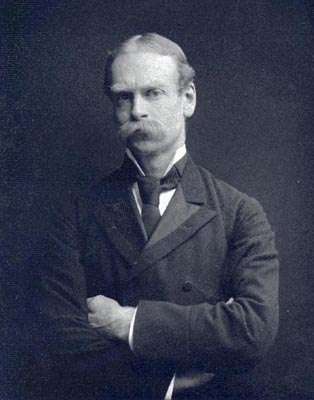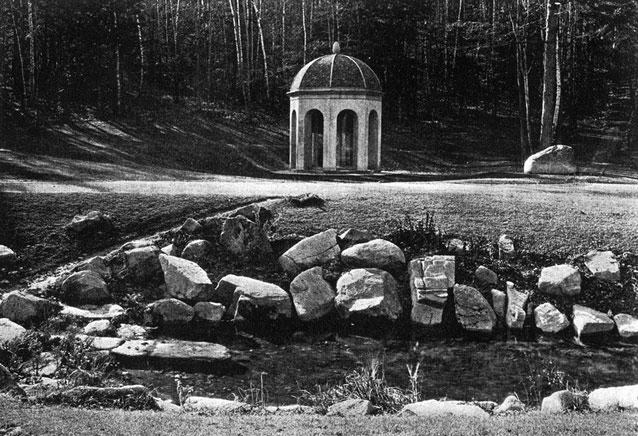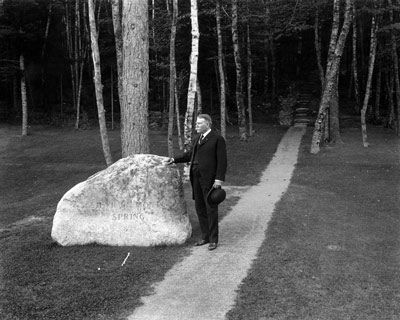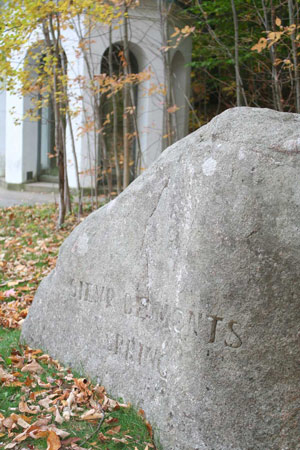Profile in Preservation

Quick Facts
Profession: Conservationist
Education: Harvard University and University of Oxford
Place of Birth: Massachusetts
Place of Death: Bar Harbor, Maine
Date of Death: 1944
Associated Landscape: Sieur de Monts Spring, Acadia National Park, Maine
Association with Landscape: Founder and first Superintendent of Lafayette (now Acadia) National Park
Biographical Sketch
Born to Charles F. and Mary Dorr of Boston, George B. Dorr was the heir to a New England textile fortune. Educated at Harvard University and the University of Oxford, he has been characterized as a gentleman scholar and conservationist. Known as the father of Acadia National Park, he spent most his adult life working in support of the establishment, care, and expansion of the park, devoting not only his time but much of his personal wealth.
Charles F. Dorr and his two sons first visited Bar Harbor in 1868. At that time, Charles F. Dorr purchased the oceanfront lot/farm at Compass Harbor. The family returned in 1878 to design, construct, and landscape their "Oldfarm" residence/house.

NPS/Acadia National Park archives
In the summer of 1901, Charles W. Eliot, president of Harvard University and resident of Northeast Harbor, wrote to forty-eight year old Dorr requesting his assistance in establishing a committee “to hold reservations at points of interest on this Island, for the perpetual use of the public.” The outgrowth of this committee was the 1903 charter of the Hancock County Trustees of Public Reservations. The Trustees acquired land to preserve the scenic qualities of Mount Desert Island. As an incorporator and as the Trustees’ first Vice President, Dorr negotiated many of these transfers himself.

NPS/Acadia National Park archives, #150
In 1909, Dorr purchased a small spring in a meadow to the northeast of Cadillac Mountain. Atop the spring, architect Fred Savage designed an octagonal-shaped canopy structure in the Italian Renaissance Revival style. In 1914, Dorr began to lobby the federal government to designate over 5,000 acres of land controlled by the Trustees a national park, later suggesting a national monument. Dorr’s spring area was a hub for the future park.
In 1916, Woodrow Wilson authorized Sieur de Monts National Monument, naming Dorr custodian. In 1919, the monument became Lafayette National Park, the first national park east of the Mississippi River (renamed Acadia National Park in 1929). Notably, Dorr’s Sieur de Monts Spring parcel and lands in the adjacent Great Meadow were not included in the monument’s 1916 boundaries. In a move aimed at maintaining control over their development, Dorr instead transferred these lands to his Wild Gardens of Acadia Corporation for donation to the park at a later date. Within the area, Dorr created wild garden exhibits for public viewing.

NPS/OCLP
Throughout his tenure as custodian and superintendent, Dorr worked closely with John D. Rockefeller Jr. when he built his carriage road and motor road systems, and with the Civilian Conversation Corps as they made myriad improvements to the park. A lifelong bachelor, Dorr was tall and gaunt with a walrus moustache. By the end of his life he was largely blind and impoverished, living in the caretaker’s cottage at “Old Farm.” Today, Sieur de Monts Spring has come to symbolize the enthusiasm and contributions of Dorr and other conservation-minded citizens in the creation and preservation of Acadia National Park.
Landscape Sketch
The Sieur de Monts Spring area is forested with spruce, maple, hemlock, and birch trees, with the exception of a glade of grass that highlights the Italian Renaissance Revival-style canopy structure built over the natural spring. The spring flows into a nearby stone-lined open water pool. Highly crafted memorial trails and garden paths lead to scenic views of the adjacent Great Meadow and Tarn, a dammed wetland that is now a lake. Nearby, park buildings in the Rustic Design Style are modeled after their Civilian Conservation Corps era predecessors, which were destroyed in the 1947 Bar Harbor fire. The spring area is well-visited and open to the public.
Spotlight: Cultural Landscapes of Acadia National Park
Last updated: October 8, 2021
